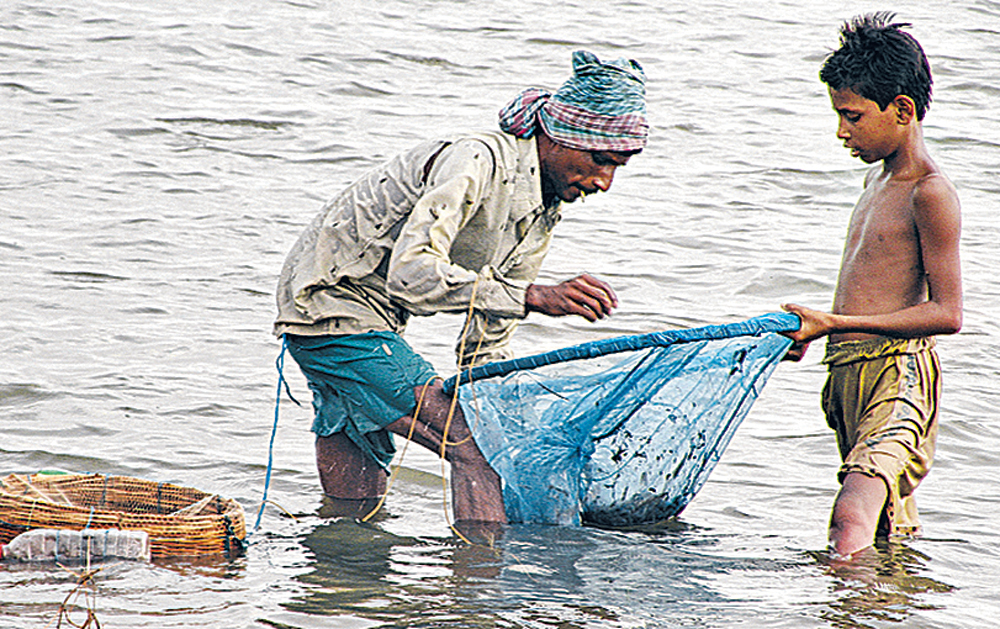An unusual ladies’ group discussion was in progress. Several tribal women between 18 and 80 years of age were gathered in a mud hut in Tipligheri village of the Sunderbans in West Bengal. They were discussing how most of them had lost their husbands to tiger attacks in and around forests here, how Aila and other storms have devastated them time and again, and how they actually get little help from the administration despite a slew of government schemes in place. “The rest of the Sunderbans barely cares about us and we receive little help from the panchayat,” says one of them.
Indeed, more than two lakh tribal people remain the most marginalised demographic group in the Sunderbans. This, despite the fact that they were the earliest settlers of the place.
In the 18th century, British judge Tilman Henckell floated the Sunderbans Plan. Under this plan, known as the first land reform initiative in the state, the vast wasteland was converted into agricultural land and the revenue was distributed among the people. The initiative, however, got derailed due to the British government’s fight with the zamindars, and was floated again in 1831. This time, tribal people were brought in from what was known as Rarh Bengal — Bankura, Birbhum and surrounding areas —and Chhotanagpur and Odisha.
The tribals cleared the forests. According to the data of the state forest department that could be accessed, between 1881 and 1916, 700 people were killed by tigers in the Sunderbans; most of them presumably tribal. Clearly, a century and more later, the trend continues.
Back to the women’s gathering. What strikes one is the matter-of-fact tone in which they are describing personal loss. “My husband went into the forest. As he was collecting crabs, a tiger attacked him and he died even before we could take him to hospital,” says Santi Sardar. “No report was filed with the police as we were told this would invite more trouble, besides we had already cremated him,” she adds. Needless to say, she did not receive any compensation.
“Most of the tiger kill stories follow the same pattern, with minor variations; for instance, in many cases the bodies cannot be found. According to our survey, there are nearly 130 tiger widows in Lahiripur gram panchayat alone, most of them tribals,” said Arjun Mandal, a local social worker who worked with tiger widows in particular and tribal women in general and had organised this particular meeting. Weeks later, he himself died in a tiger attack — his body never to be found.
“The level of formal education among the tribals in the Sunderbans is quite low and this reduces their chances of getting conventional jobs, which in turn enhances their dependence on forests. They also traditionally like to frequent the forests, which adds to the tiger-tribal conflict and pushes up casualty figures,” explains Anurag Danda, a Sunderbans expert and former head of the Sunderbans project of WWF-India. Danda points out that though tribals were the early settlers and had the opportunity to procure land, they did not do so as a majority of them never considered agriculture as their primary livelihood. It is ironical, of course, because with time almost all the tribal groups here were pushed into agriculture. Fishery became the other livelihood option.

A file picture of a fisherman from the Sunderbans Picture by Nirmal Basu
Sugata Hazra, a professor in the oceanographic department of Jadavpur University (JU), explains how in the Sunderbans both agriculture and fishery are suffering due to the ever increasing climatic impacts, particularly salinity and, as a result, forest dependence is increasing. He says, “With fish catch dwindling in recent times, humans are moving deeper into the forest in search of fish. The narrow canals are close to the dense forests and during low tide such situations often make them sitting ducks to tiger attacks.” Indeed, about 85 per cent of tiger attacks happen during low tide and in spots close to the forest.
Nilanjan Ghosh, an ecological economist and the director of the Calcutta chapter of the think tank, Observer Research Foundation, has found in the course of an ongoing research that 420 people died from tiger attacks between 2006 and 2016, and 80 per cent were catching fish or crabs at the time of attack. Maximum casualties have happened in the forest areas — Jhilla 85 deaths, Pirkhali 79, Arbeshi 63 and Chandkhali 63 — and a sizeable number of victims were tribals. A senior government official who refused to be quoted observed that nearly 60 per cent of fish and crab catchers in the Sunderbans are tribal people.
In the last decade or so, climate impacts have replaced tigers as the major foe of the tribals. These people have limited options for migration compared to their non-tribal counterparts. “The tribals with almost no education and skill in general mostly migrate for a limited time to various parts of Bengal to work as unskilled labours at construction sites, brick fields, mining…” says Tuhin Ghosh, a professor at JU who is also part of a migration project in the Sunderbans. “To migrate beyond the state, you need money; most tribals cannot manage even that,” says Subhash Acharya, a retired official of the state’s Sunderbans department. “Tribals live in acute poverty and hardly receive any government help,” Arjun had said.
Achintya Sardar, who studied up to Class VIII, points out that buffeted by tigers and climate change some tribals like him have begun to venture out of Bengal though the outskirts of Calcutta remain the dominant go-to area for employment.
According to the 2011 Census, the tribal population of the Sunderbans was 2,11,927. This comprises chiefly four groups — the Munda, Santhal, Bhumij and Oraon tribes. Today, however, most like to use the common surname of Sardar. The homogenisation extends beyond the last name. Instances of morog lorai (cockfights) are now few and far, and haria (local liquor) swigging is not as common. Talking to The Telegraph at the recently-concluded Madrid climate summit, global climate lead of NGO ActionAid Harjeet Singh said: “This (losing of cultural identity) is now a recognised area under climate change impacts, and is mainly positioned under non-economic losses. Even during this summit, we are discussing how such climate triggered cultural and social losses can be prevented and the tribal groups of the Sunderbans’ is a great case study.”



